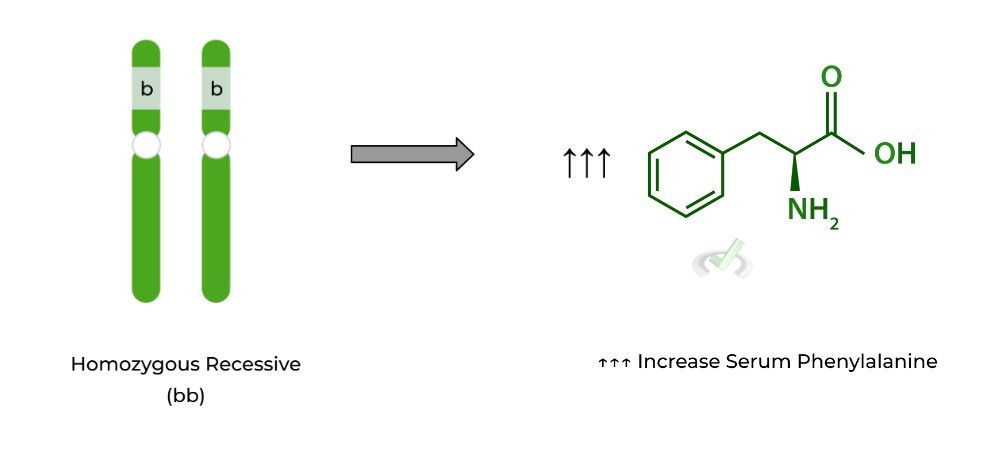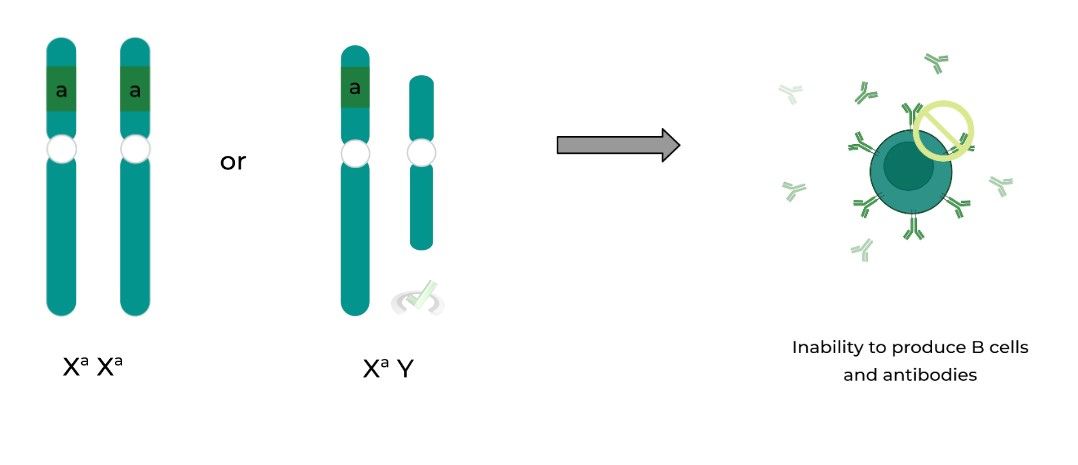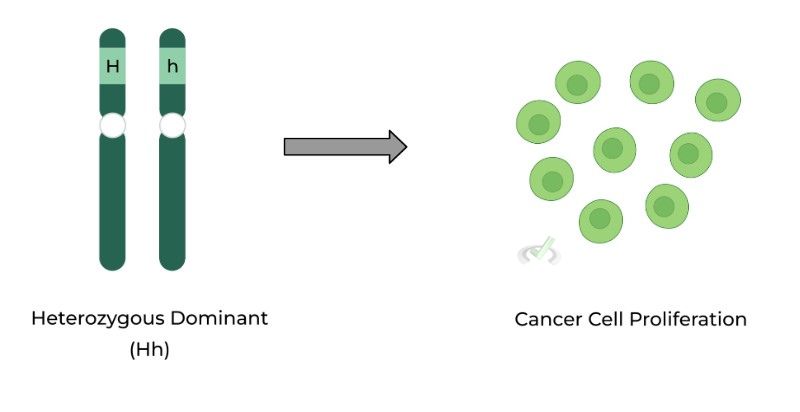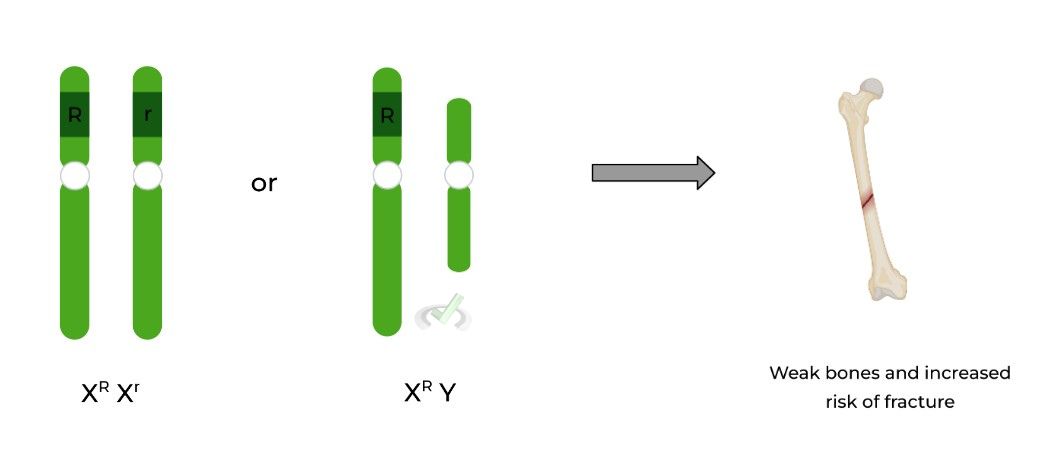I. What is Disease Inheritance in Mendelian Genetics?
In our previous articles about mendelian genetics and patterns of expression, we’ve primarily focused on these concepts in the context of basic traits such as eye and petal color, hair length, etc. However, we can also apply these concepts to how diseases are inherited!
Now having covered mendelian genetics and patterns of expression in both the context of autosomal and sex chromosomes, we’ll also see that both types of chromosomes can be involved in disease inheritance. Specifically, we’ll take a specific look at how this affects sex-linked inheritance.
You’ve done all the work and review to this point (you’re awesome and killer for that, btw!!): now we’re simply building off the foundations and principles that you’ve learned previously and apply it to a new context of disease inheritance!
II. Content Review
Luckily, the MCAT will only focus on diseases which are involved in complete dominance (i.e. being dominant or recessive). We’ll categorize the diseases in two ways: whether they are 1) dominant or 2) recessive.
Furthermore, for each of the categories mentioned above, we’ll further subcategorize them into whether they are autosomal or sex-linked.
>> Recessive
For these types of diseases, as the name implies, 2 recessive alleles are required for the disease phenotype to be expressed.
However, the only exception to this rule is in the case in a X-linked recessive disease for males, in which only 1 recessive allele is required.
⇒ Autosomal Recessive:
For autosomal recessive cases, 2 recessive alleles are required NO MATTER WHAT in order to express the disease: we’ll use phenylketonuria, a fairly common autosomal recessive disease.
This disease is caused by 2 mutated recessive alleles of the PAH gene on chromosome 12, which codes for phenylalanine hydroxylase, an enzyme which metabolizes phenylalanine.
The lack of this enzyme in the disease results in a buildup of phenylalanine in the bloodstream, which is very toxic, particularly to the brain.

⇒ X-linked Recessive:
For X-linked recessive disease, females must have 2 recessive alleles on their X chromosomes in order to express the disease. However, males only require 1 recessive allele on their X chromosome.
Recall that males are termed hemizygous for X-linked inheritance because they only have a single copy of a gene on the X chromosome!
We’ll use X-linked agammaglobulinemia again as an example for a X-linked recessive disease. Recall again that the recessive phenotype for this disease results in the inability to produce B cells and antibodies.

>> Dominant
Again, as the name implies, these types of diseases only require 1 dominant allele in order to express the disease phenotype! Remember, a good way to think about this is that the dominant allele “masks” the expression of the recessive allele in heterozygous genotypes.
For simplicity, we’ll only show the heterozygous dominant genotypes in the examples below as the homozygous dominant genotypes are pretty self explanatory.
⇒ Autosomal Dominant:
For autosomal dominant cases, as mentioned above, only 1 dominant allele is required for expression of these diseases: take type 1 neurofibromatosis.
This disease is caused by a dominant mutation in the NF1 gene, located on chromosome 17, which codes for the protein neurofibromin: this protein has a big role in cell cycle regulation!
The resulting mutations cause a loss of cell cycle regulations and thus the development of cancerous cells and tumors, most notably producing tumors in the nervous system!

⇒ X-linked Dominant:
Similarly, only 1 dominant allele needs to be present on one of the X chromosomes in order to express the disease. Let’s take X-linked hypophosphatemia as an example.
In its simplest form, this disease is basically an X-linked inheritance form of rickets, where those with the disease suffer from weak bones and thus are more prone to fractures, often due to low phosphate levels (as indicated by the name).

III. Bridge/Overlap
For this bridge/overlap section, it might be a little different than to the one you’re used to seeing in our other articles. In this case, we won’t have a tie-in to another MCAT topic, but will give you some high yield facts about disease inheritance.
From these high yield facts, we want you to understand why it is the case and understand/develop that flow of logic.
We’re so sorry that we keep shoving this concept down your faces! – However, we here at MCAT Mastery really believe that developing this skill will really push your MCAT performance to the next level!
Luckily, these facts really just concern X-linked diseases because these are the types of diseases in which sex plays a major part in disease inheritance.
>> High Yield Fact 1:
Males are more affected by X-linked recessive disorders than females.
⇒ Why?
Recall that males only have one X chromosome and are termed hemizygous for X-linked traits because they only have a single copy of the gene on their only X chromosome.
As such, they only need 1 recessive allele in order to express the disease. For females, however, the presence of 1 recessive allele can be masked by a dominant allele because they have 2 X chromosomes, making males more likely to be affected by a X-linked recessive disease.
This is the type of thinking and logical flow that we encourage you all to build over the course of your MCAT prep!
>> High Yield Fact 2:
Females are more affected by X-linked dominant disorders than males.
⇒ Why?
This is essentially the opposite! Male offspring can only get their X chromosome from their mother as they get the Y chromosome from their father.
Female offspring, however, get their X chromosomes from both their father and mother, which increases the probability of acquiring a dominant allele on the X chromosome if the parents are affected and/or carriers.
IV. Wrap Up/Key Terms
Let’s take this time to wrap up & concisely summarize what we covered above in the article!
Similar to traits, diseases can also follow the inheritance patterns outlined in mendelian genetics. Luckily for the MCAT, you’ll only be tested on complete dominance when it comes to disease inheritance.
We’ll divide disease based on whether they’re dominant or recessive & further subcategorize them whether they occur on autosomal or sex chromosomes.
>> Recessive:
As the name implies, 2 recessive alleles are required in order to express the disease phenotype. The only exception to this is for X-linked recessive diseases in males in which only 1 recessive allele is required due to them being hemizygous.
Males are more likely to be affected by X-linked recessive disease compared to females because they only require 1 recessive allele to express the disease phenotype!
Females on the other hand have another X chromosome, which can possibly mask the recessive allele if the allele is dominant!
>> Dominant:
Similarly as the name implies, only 1 dominant allele is required in order to express the disease phenotype! Females are more likely to be affected by X-linked dominant diseases than males.
This is because males can only get their X chromosome from their mothers as they get the chromosome from the father; however, females get their X chromosomes from both their father and mother, increasing the chance of acquiring a dominant allele.V. Practice
Take a look at these practice questions to see and solidify your understanding!
Sample Practice Question 1:
Given a X-linked recessive disease and the crossed parental genotypes being XaY and XAXa, with “A” being the dominant allele and “a” being the recessive allele, what is the probability that a daughter will express the disease?
A. 0%
B. 25%
C. 50%
D. 100%
Ans. C
After solving the punnett square, the 2 possible genotypes for a female organism are XAXa and XaXa. As such, there is a 50% chance that a daughter will express the disease as one of the genotypes has both recessive alleles.
Sample Practice Question 2:
T/F. Fathers can pass down a X-linked disease to their sons.
Ans. False
This requires a bit more critical thinking, which is why we stress this component so much in our articles. Recall that sons can only get their Y chromosome from their father.
As such, only mothers can pass down an X-linked disease because this is the only source where the sons’ X chromosome can come from!



 To help you achieve your goal MCAT score, we take turns hosting these
To help you achieve your goal MCAT score, we take turns hosting these 
























